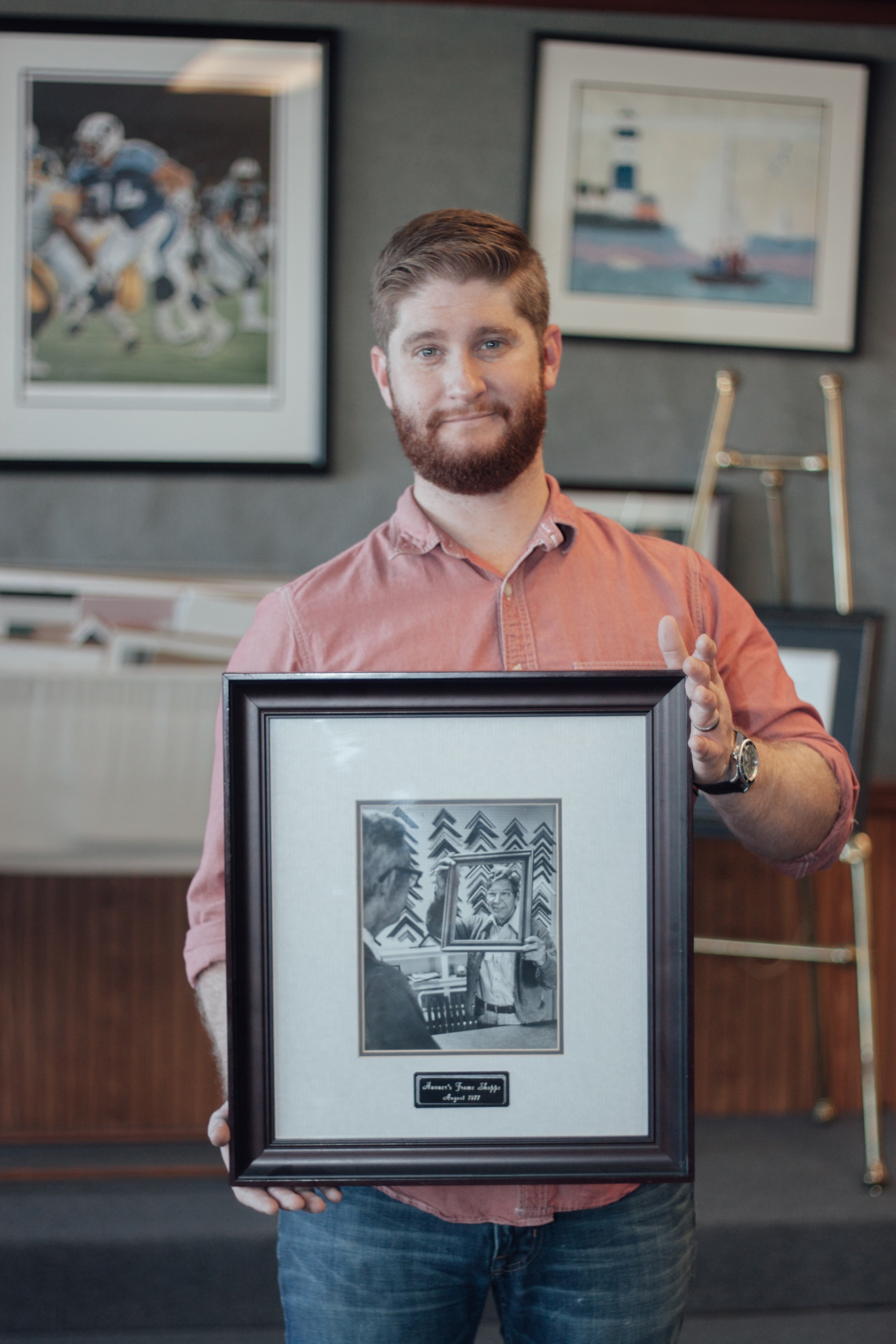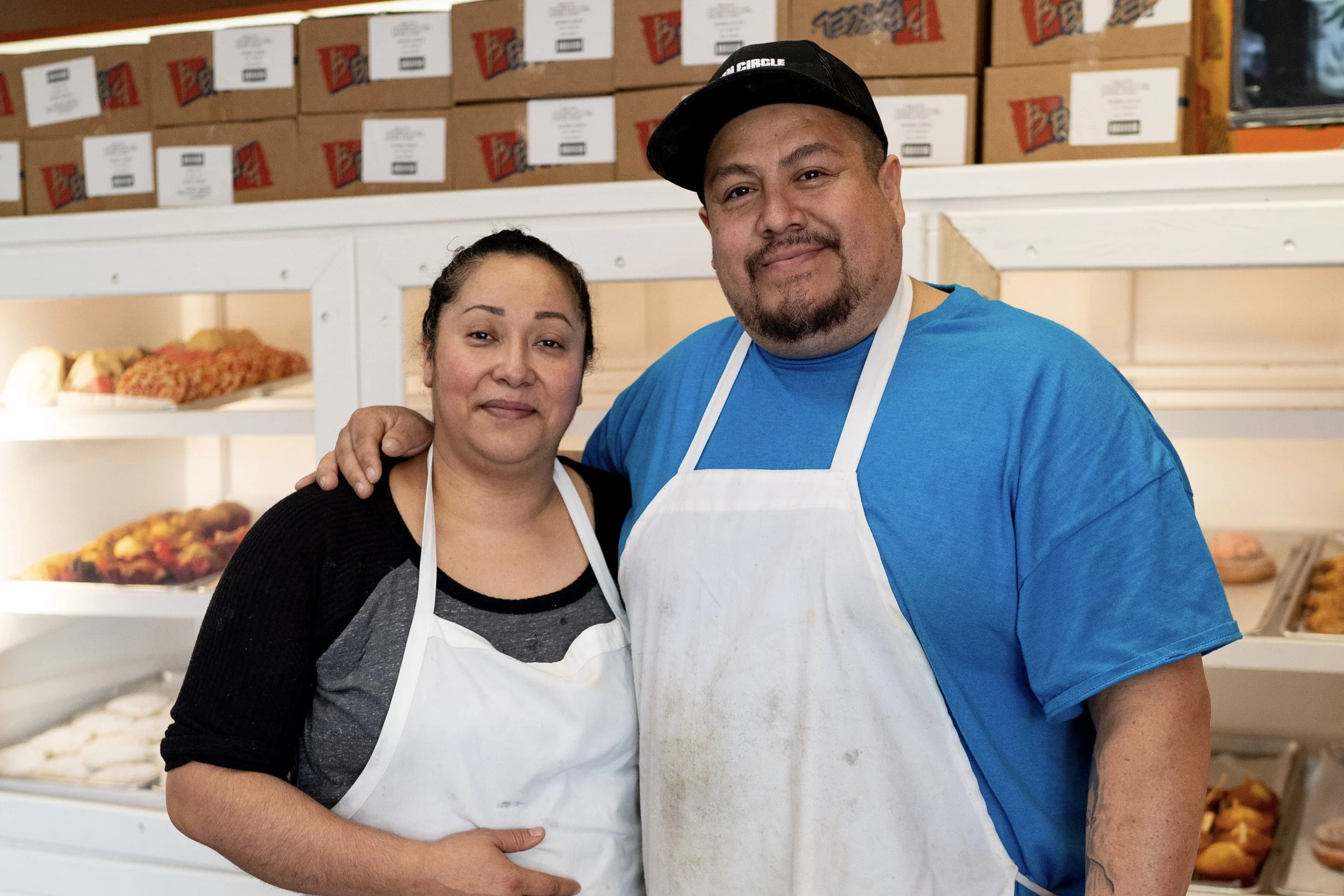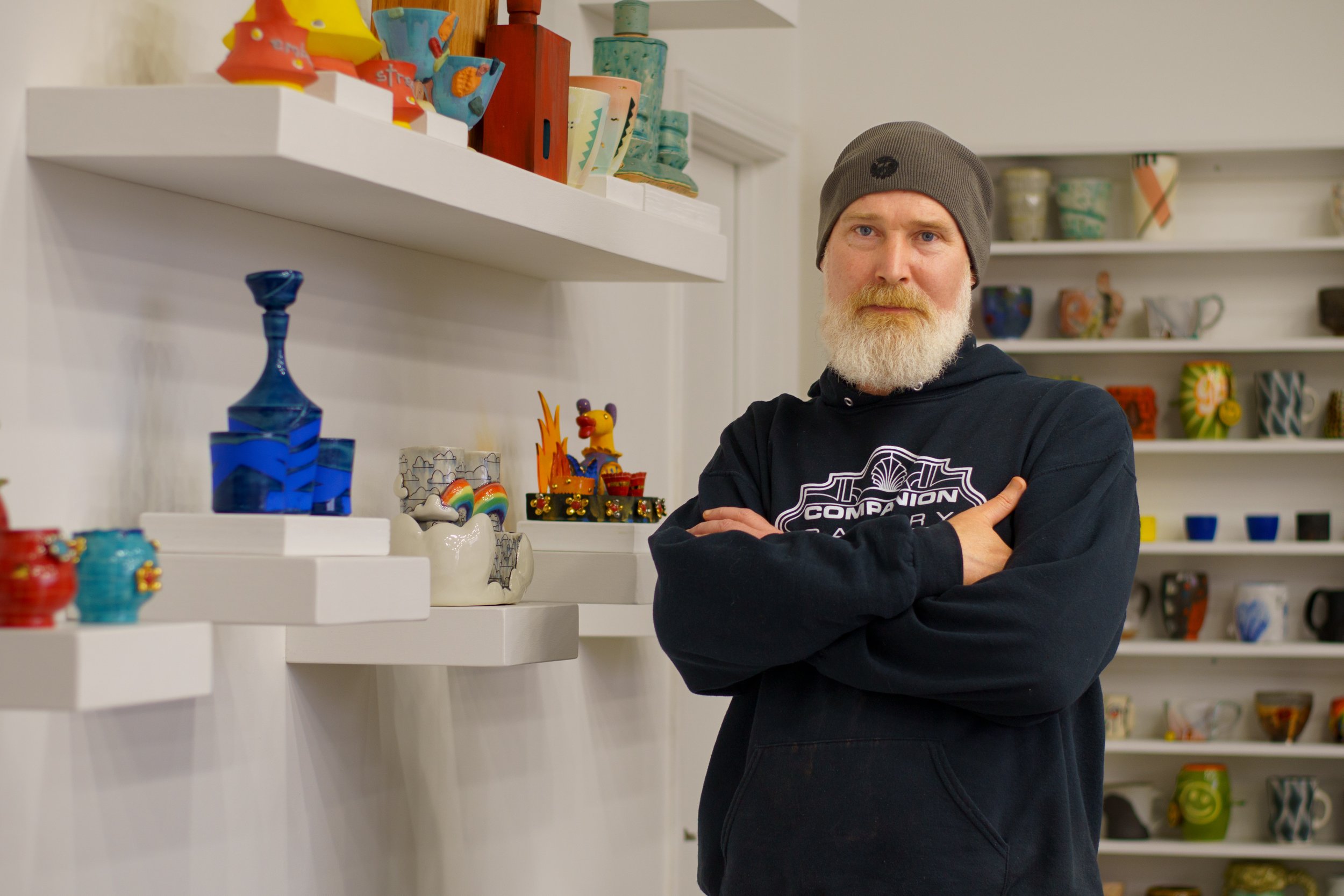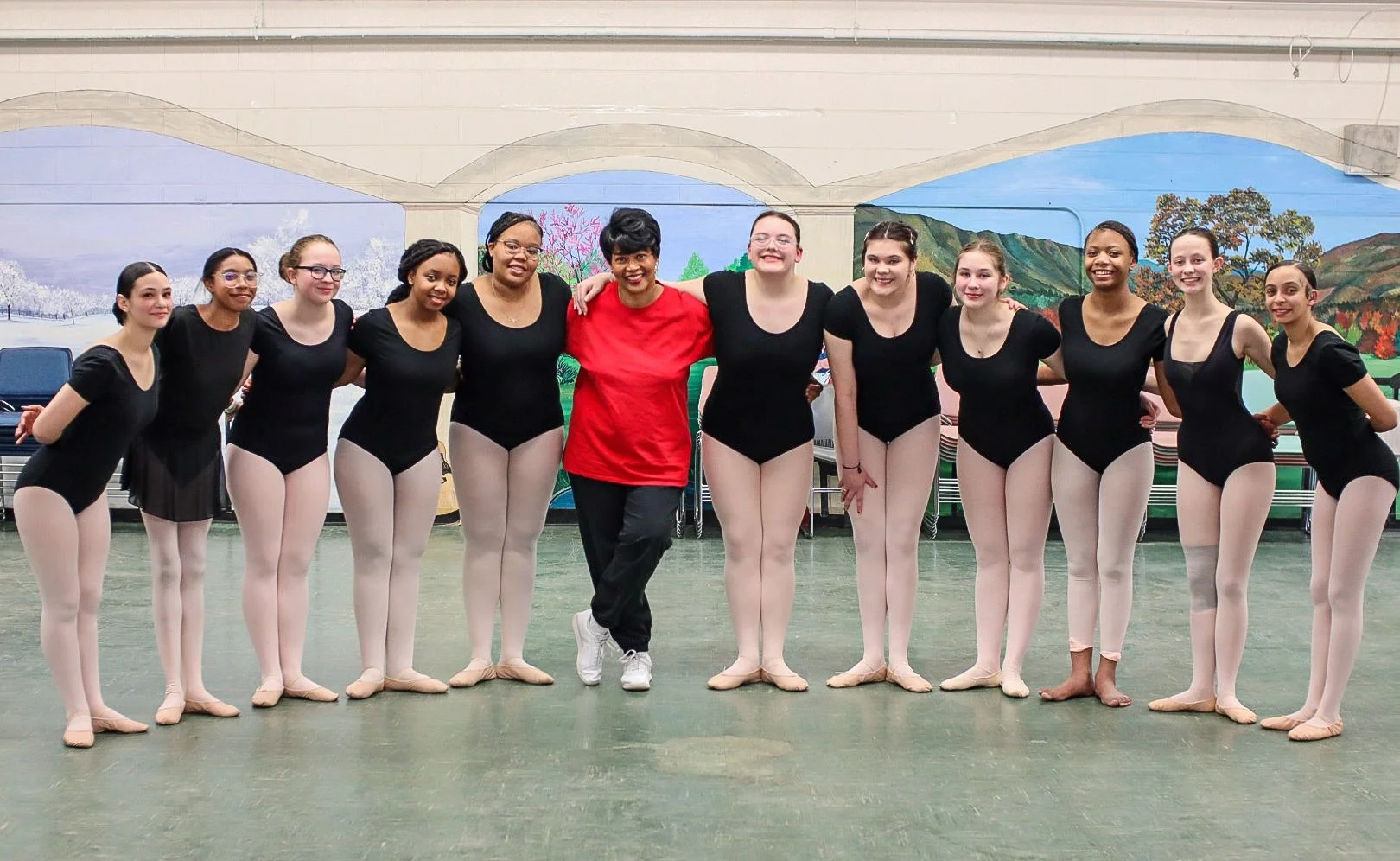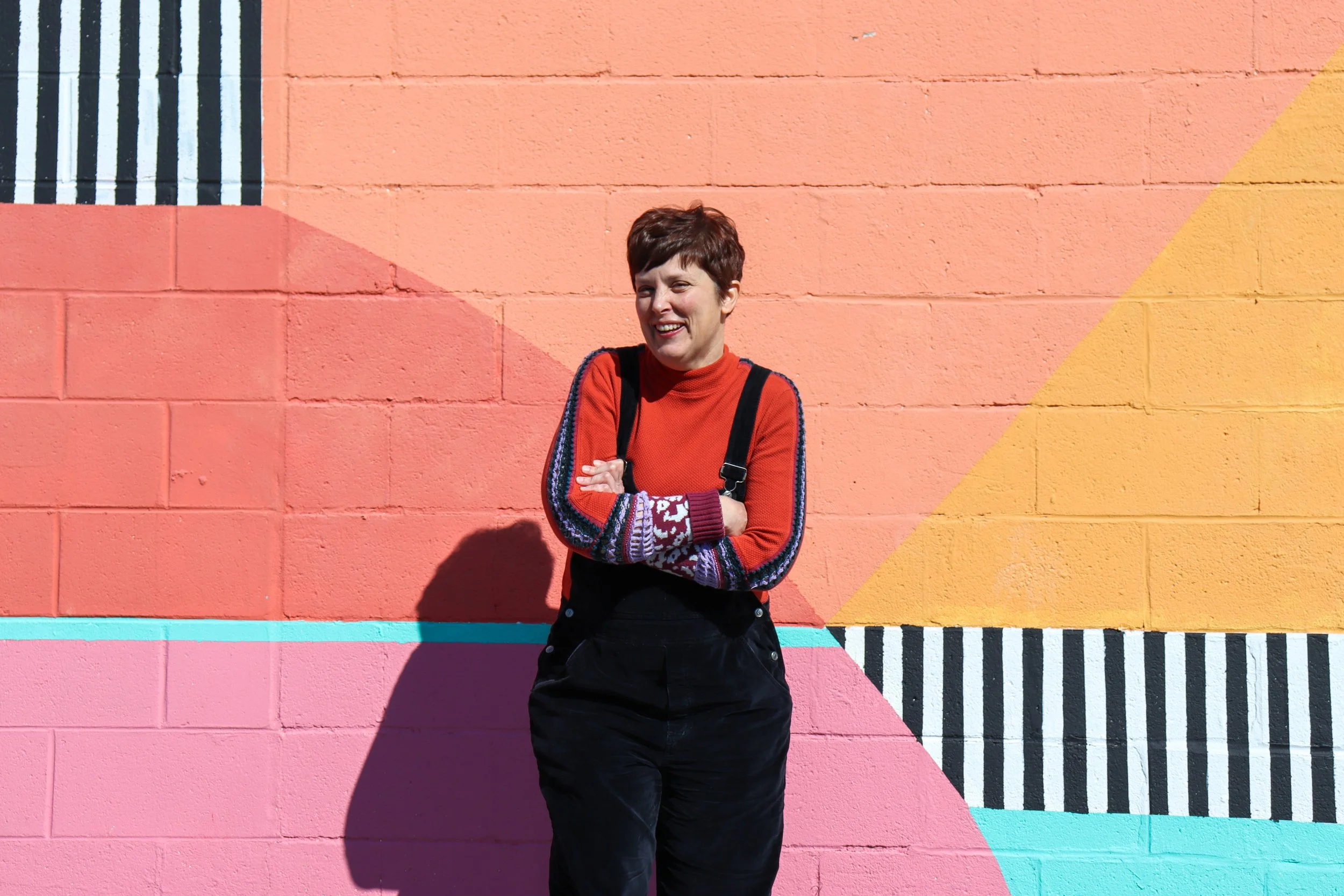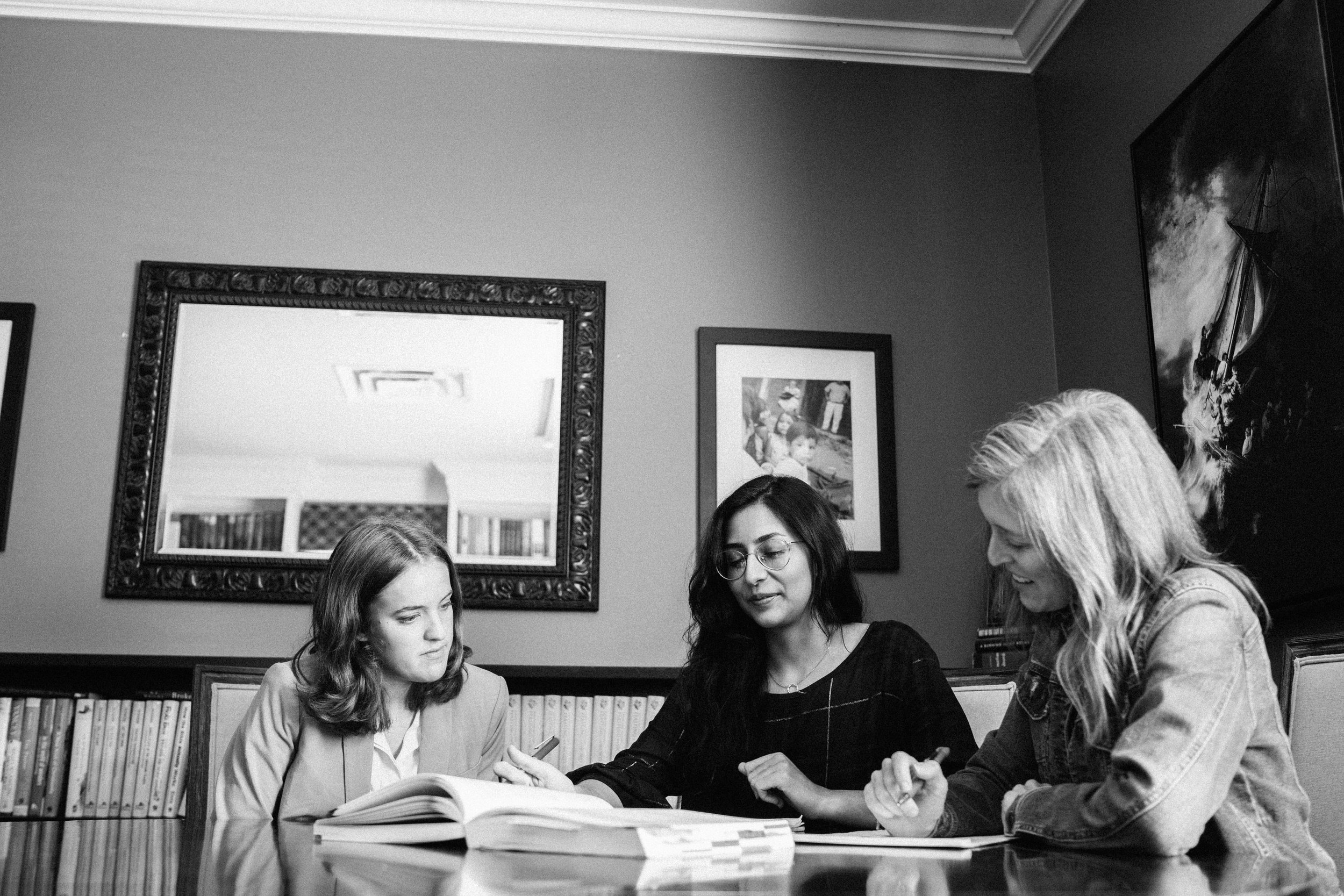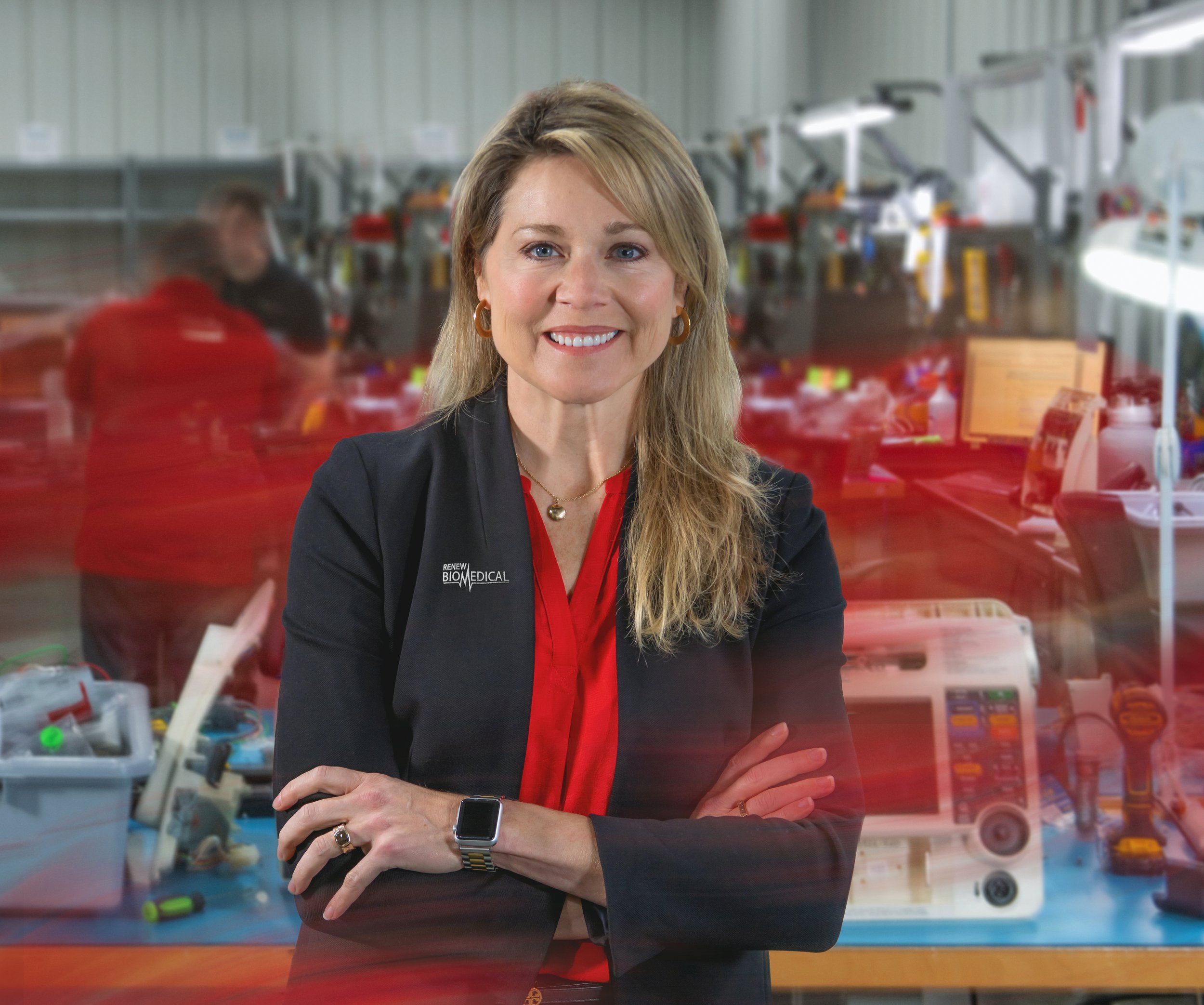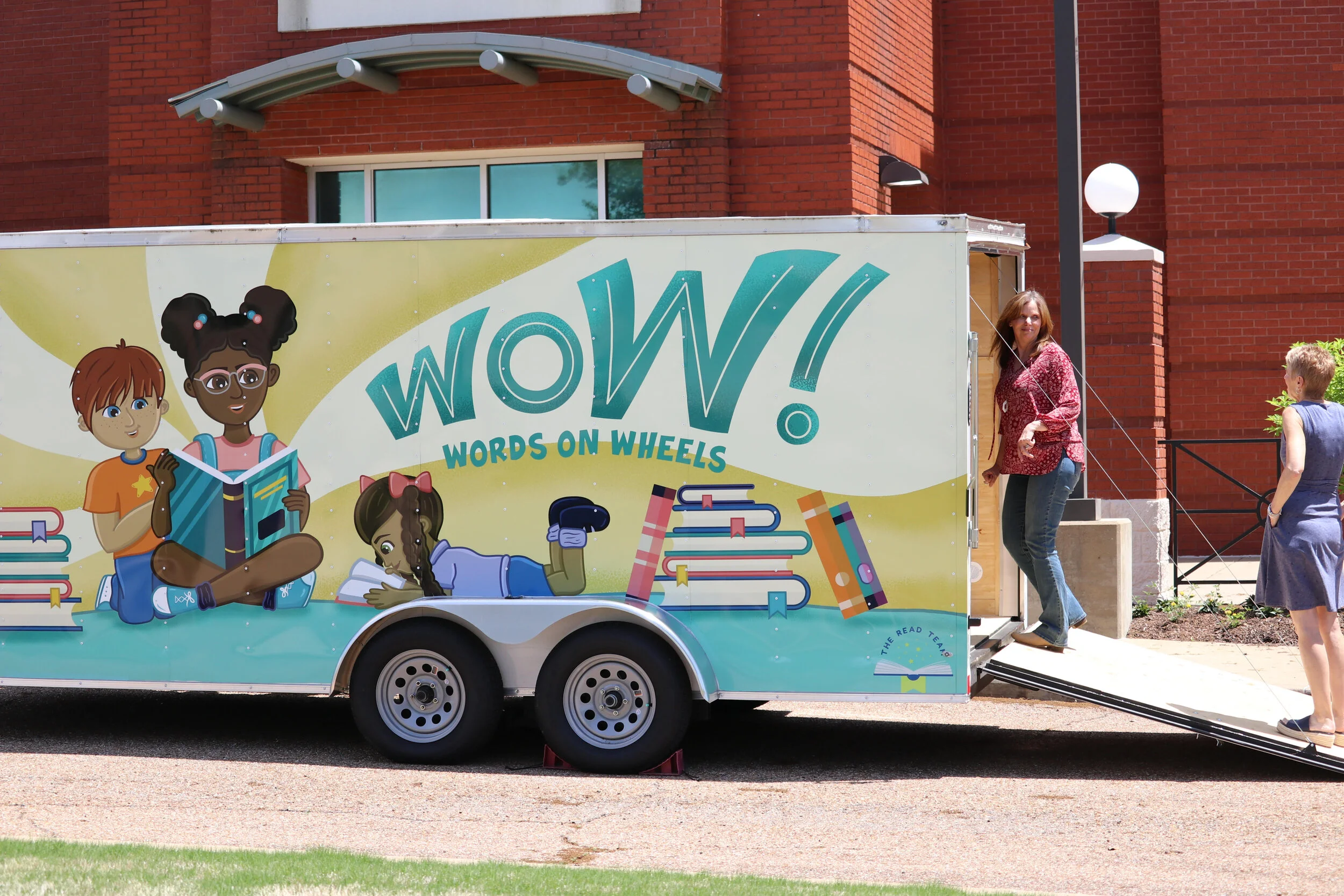Third Generation
This piece was originally published in the Winter 2015-2016 issue of Our Jackson Home: The Magazine.
It seems like I find myself in a lot of conversations about how much Jackson is growing. You might also hear natives and non-natives alike saying, “Jackson is nothing like it was ten years ago.” I recently found myself in conversation with a new Jackson resident while waiting in a food truck line at the farmers’ market, and the California-native remarked on how young and up-and-coming Jackson feels compared to other small Southeastern towns she’s experienced. From the expansion of North Jackson to the revitalization of the downtown area, Jackson seems to be cultivating a more defined culture. Things are stirring. But if we’re not careful, it can be easy to forget amid the cultural and economic growth that Jackson has been around much longer than the “old Starbucks.” While the new definitely contributes to the sense of vivacity some people feel in Jackson, our city is rich in people and places that have been around long enough to cultivate the sense of a warm and well lived-in community.
One such thriving piece of Old Jackson sits tucked around the corner of Campbell and North Highland in an area of midtown remembered by those who have lived here long enough as Hicksville. There, under a red sign that reads “Custom Framing Since 1977,” you’ll find Havner’s Frame Shoppe. Now an exemplar family business, Ray Havner opened a frame shop out of his home thirty-eight years ago and eventually set up shop on the corner of Campbell and Highland where they’ve been since. In the spring of 1993, Ray’s son Charles Wayne purchased the business from him before Ray’s passing that November. Charles and his wife Lynn still own the business, and if you walk in today you’ll find, behind the counter and some swinging, saloon-styled doors, possibly listening to Duran Duran, the third generation Havner Shoppe man, Charlie Martin Havner. “People know me as Little Charlie, or the Son, or the Young Charlie,” he tells me laughing.
We’re at Charlie’s workstation in the back of the shop where he is attentively framing a large art print of a white tiger. To his left is a pegboard with some tools, mounting equipment, and stickers from various frame shops; I’m sitting next to a cabinet storing plates of glass arranged by size; and the back wall shelves matting arranged by color.
Charlie worked in banking for seven years before coming to work for his father at the shop. “I decided that my grandfather was an incredibly important person to me, and I wanted to continue not only his legacy but my family’s journey in this business,” he says as he measures and cuts foam board to insert into the back of the frame he’s working on. “I do it to honor his memory, and not only that, I love doing this. It’s interesting—my father and my grandfather had to learn how to do this. They had to train themselves and do it by trial and error. It took a long time for it to get to where it is today, but my blessing is that I’ve never had to learn this. I’ve never not known it. It’s been in my life for the entirety of my life. You can go back there and look at pictures of me vacuuming the shop floor when I was five years old. It’s something I’ve always been around. It’s one of those things where growing up I said, ‘I’ll never work in the frame shop. I’ll never do that. I’ll do something else. I’ll do anything else.’ But the older I got, the more important it became to keep that family legacy going.”
At the very back of the shop there are Polaroids of Charlie in the same space we’re in today. One picture shows him with his arms folded confidently across his chest like he still does. Another shows him vacuuming up wood and plaster chippings where the frame mouldings were cut.
“I really wanted to work here when I was a kid,” he says. “I really wanted to work here. I used to ask my dad for a job application.”
“Did he ever make you fill one out?” I ask.
“I don’t think he ever did, but on the other side of this wall there was a desk—it’s still there—where I would sit and study, do my homework after school and do all that, and I would write him notes like, ‘Give me a job application.’”
The shop is filled with his childhood memories. As a boy he would frame his drawings with scraps of mat board and set them out front for sale. His grandmother would give him old medicine bottles filled with change and tell him someone bought his work. Charlie says even then he knew that it was his grandmother who was buying his drawings, but that didn’t matter. He continued to mat his drawings for the same reason he would leave banking for the family business
years later.
“It was just the idea of creating. That’s what I was doing here as a kid,” he says. “There is a frame back there from 1996; it’s the first frame I ever put together. It was in February of ’96, and I’ve still got it. . . . Throughout school, anything I could do here, I did. Not the big, important stuff, that was for later on, but that is what it was like being here as a child.”
It is clear that Charlie takes pride in his work as we talk. He steps back from the frame he is building to thoughtfully consider how he discusses the business. When he picks his work back up, he does so with care and precision, turning the materials in his hands to inspect for quality at every angle.
“People say, ‘Picture frames? How do picture frames matter?’” he says. “And I started thinking about how do picture frames matter? Because it’s a seemingly inconsequential thing to own a picture frame. But I started thinking about it, and I thought when you’re inviting someone into your home or into your business what’s around you is important. . . . What’s in your home is a reflection of who you are, and when you invite somebody into the most personal space that you’ve got, what’s around you says something about you. It tells your story. I started thinking, when people select their picture frames, it’s kind of like they’re showing a piece of themselves, and I get to be a part of that. That’s what makes it really important for me. I get to help people tell their story in their style. It’s like waking up and eating ice cream every day. I love doing this. I love helping people tell their stories. And they’re awesome stories.”
“I get to help people tell their story in their style.”
And the stories are plentiful. Charlie tells me about a woman who once brought in a tattered poster that wouldn’t have been worth anything to anyone else, but it hung in her grandmother’s kitchen for decades, and it meant the world to her. He remembers how special it was to be able to help her preserve that piece of her family’s past. “It wasn’t about the frame, the glass, the mats. It wasn’t anything about that,” he says. “It was about a memory—a very important memory to this lady. And when she saw it, it was one of the most amazing things. It’s why I get up every morning.” Charlie tells me how much he loves framing diplomas and seeing the pride in his customers’ faces. “Every single time they have their chest stuck out a little bit. They are so proud.” He tells me about the violin framed in a shadowbox out front, and how his grandfather gave it to his grandmother the Christmas before he passed away because, even though neither of them knew how to play it, he felt like he needed to give her something beautiful.
As we’re talking, Charlie reaches behind me and thumbs through the plates of glass looking for the right size for the frame he’s working on.
“This is the fun part,” he says, pulling one out.
He takes a glass cutter and proceeds to run it along each end to size it down to the dimensions
of the frame.
“If something’s going to go wrong, this is where it’s going to go wrong,” he says. And with that, he begins to snap off the excess glass. With glass cleaner he cleans both sides of the pane and follows it up by softly and thoroughly brushing each side. He holds up the glass and examines it against the light. He inserts the glass, the mat, and the art print into the frame and checks again to ensure that the glass is spotless.
I ask him if working for a family business has shaped his work ethic.
“Oh, absolutely. . . . I love doing it. There are parts of it that I would call work, but this right here, I wouldn’t call this work.” He puts the foam board backing into the frame and staples it in around each side. “I love being able to work toward something. Working with my hands toward a finished goal. It’s one thing to have something that’s done, buy it at a wholesale price, turn around and sell it for profit. That’s fun to do, it really is. That’s a really cool thing. . . . But for somebody to come in and select from thousands of different options, literally thousands of options, and then you get to make that yourself, and then you get to give that back to that person—it’s a much more intimate thing that fuels your work ethic, because you’re a part of something important. I guess that would be the primer for the hard work.”
“What have you learned from older Havner generations about what work is?” I ask.
“I’m very picky about how something looks. The back of this frame is going to be against the wall for a very long time,” he says as he pulls out some brown paper to cover the back. “No one’s ever going to see it. But I want the back of the frame to look as good as the front. And the mentality could be, ‘Well, no one’s ever going to see that. It doesn’t matter.’ On the inside of the frame you could let things go that you would say, ‘Nobody’s ever going to see that. That doesn’t matter.’ Well, no, it matters a great deal. It matters a lot because it says something about your integrity. Your integrity is the most important thing ever, and you can’t shortcut. You can never shortcut. If you do the job, you do it right or you don’t do it. That is definitely something I’ve learned with my mom and my dad owning the business. You do it right.”
“Your integrity is the most important thing ever, and you can’t shortcut. You can never shortcut. If you do the job, you do it right or you don’t do it.”
“What do you think about tradition and heritage and why it’s important that we pass things down?” I ask him. “Whether a trade or anything else?”
“Everybody wants to leave a legacy. Everybody wants to leave their mark on their community and the lives of others. . . . You need to be mindful of what that legacy is and you need to be mindful of what you’re doing, whether you’re working at a small frame shop, or you’re a pastor or a receptionist or the President of the United States. Your integrity matters, and the way you interact with people matters a lot. It’s important that you maintain traditions to tell people where something has been, where it’s going.”
Charlie finishes wiring the back of the frame, puts a golden Havner’s Frame Shoppe sticker on the back, and signs it with a Sharpie marker. Entrusted with the legacy of the Havner business, I realize as he flips the frame over in his hands to inspect it for a last time that his and his family’s legacy is also entangled in those of others. He walks me around more rooms in the back of the shop, and I see the personal histories Jacksonians have left in his care: A signed letter from President Barrack Obama; a heavy weight championship belt; an old military battalion flag; and a large black and white class portrait exhibiting the beehives, crew cuts, and horn-rimmed glasses of South Side High School’s Class of 1965. As Charlie Havner carries on the trade that was passed down to him by his father, and his father’s father, he is preserving relics of a Jackson that one day will also be passed down to sons and daughters and will be looked to for some idea of where they’ve come from, where they’re going.
“I think Jackson is one of the best places to be. I couldn’t imagine being anywhere else,” he says emphatically as we begin to wrap up our time together. “We hardly advertise, but this town has supported us for thirty-eight years basically by word of mouth. We get new customers every day, and we still get to see the same faces from when we started. We’ve got customers who are with us from when we started. I love the loyalty. . . . I’m thankful for Jackson. I’m thankful for the fact that Jackson loves, respects, and values tradition. And if any evidence is needed, I’ll open tomorrow morning at 9 a.m.”
Havner’s Frame Shoppe is located at 1019 Campbell Street in midtown right off of North Highland Avenue. They are open Monday through Friday from 9:00 A.M. to 5:30 P.M. and Saturday from 9:00 A.M. to 12:00 P.M. Visit their website and Facebook page, and you can contact them at 731.427.7230.
Josh Garcia is a commercial photographer who landed in Jackson in 2008. With a B.A. in English from Union University in his back pocket, he’s abandoned other adjectives for “home” when describing this city. He enjoys reading, writing, photography, and cultivating community around the dinner table. #INFJ
Photography by Josh Garcia.

